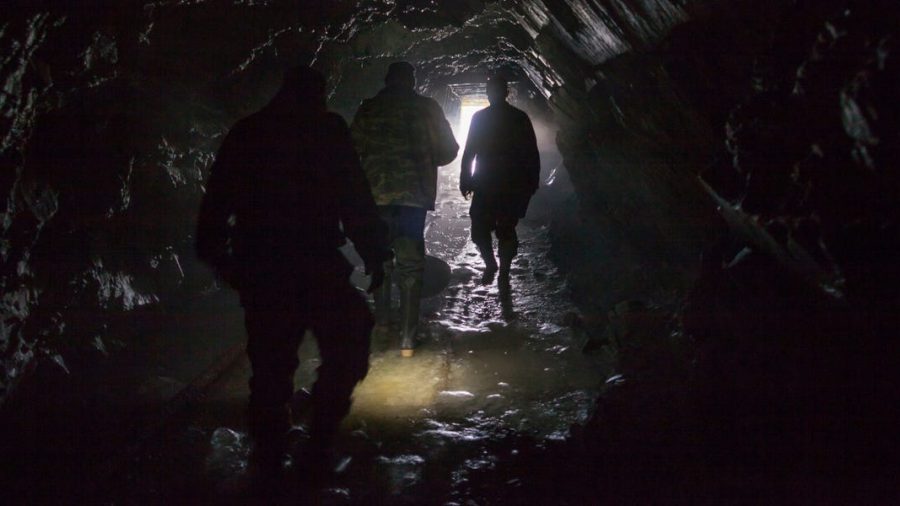South Korea’s SEOUL After North Korea fired around a dozen missiles in its direction Wednesday, at least one of them landing close to the sensitive maritime boundary between the two adversaries, air raid sirens went off and residents of a South Korean island took cover in underground shelters. As a prompt response, South Korea conducted its own missile tests near the same border.
The launches came as North Korea escalated its harsh rhetoric over the ongoing South Korean-US military exercises, which it considers as an invasion practice, and vowed to deploy nuclear weapons to make the US and South Korea “pay the most terrible price in history.”
They also took place just after the White House reiterated that the drills are a regular part of South Korea’s training calendar in response to North Korea’s saber rattling.
“We reject the idea that they are provocative in any way. Speaking on behalf of the White House National Security Council, Adrienne Watson said late Tuesday that “we have made it clear that we have no hostile intent towards (North Korea) and call on them to engage in serious and persistent negotiation.
North Korea “remains unresponsive. While doing so, we will keep collaborating closely with our allies and partners to prevent the North from advancing its illegal weapons programs and endangering regional stability, according to Watson.
In addition, when the world’s attention turned to South Korea following the country’s worst disaster in years over the weekend, which saw over 150 people die in a mob surge in Seoul, the North conducted a series of missile launches.
According to South Korea’s military, North Korea fired more than ten different types of missiles on Wednesday off the country’s eastern and western shores.
One of the missiles, a ballistic weapon, was heading straight for Ulleung island in South Korea before it came to rest 104 miles to the northwest of the island. Following that, the island received an air raid alert from South Korea’s military, according to the Joint Chiefs of Staff of the South. Photos of islanders relocating to subterranean bunkers were published in South Korean media.
On Wednesday, the military of South Korea declared that the island’s air raid alert had been canceled.
A 16-mile distance from the maritime boundary between the competitors, that rocket fell in international seas. Since their divide in 1948, the South Korean military claims that no North Korean missile has ever come down thus close to the sea boundary.
The Joint Chiefs of Staff of South Korea declared in a separate statement that “this is extremely unprecedented and we will never tolerate it.”
Later on Wednesday, South Korean fighter aircraft fired three precision-guided, air-to-surface missiles near the eastern maritime boundary to demonstrate the nation’s will to respond harshly to North Korean provocations. The missiles, according to South Korea’s military, crashed in international seas 16 miles north of the sea border extension where the North Korean missile earlier on Wednesday had landed.
It declared that it remains ready to defeat North Korea in any future battles with “an overwhelming triumph.”
Leif-Eric Easley, a professor at Ewha University in Seoul, said that North Korea’s use of rockets that activate air raid sirens “appears meant to intimidate South Koreans to persuade their government to change policy.” Although North Korea’s growing military might and tests are concerning, making concessions in exchange for alliance participation or nuclear recognition will only make things worse.
Three of the North Korean weapons launched were later recognized by the Joint Chiefs of Staff of South Korea as “short-range ballistic missiles” fired from the eastern coastal town of Wonsan in the North, including the one that fell close to the maritime boundary.
Short-range North Korean weapons are intended to attack important South Korean infrastructure, particularly American military installations there.
Yoon Suk Yeol, the president of South Korea, instructed officials to act quickly and in an unclear manner to ensure that North Korea suffers the repercussions of their provocations at an emergency meeting with top security officials. The North Korean missile’s landing close to the border, he declared, was “almost a breach of (our) territorial waters.”
The risk of armed confrontations between the Koreas off their western or eastern coasts is rising, according to analyst Cheong Seong-Chang at the private Sejong Institute in South Korea. In order to keep tensions from rising out of control and possibly forcing the North to use its tactical nuclear weapons, he said South Korea must respond to North Korean provocations with “proportional answers” rather than “overwhelming responses.”
Since North Korea adopted a legislation allowing the preemptive use of its nuclear weapons in a variety of circumstances and conducted a series of nuclear missile tests, tensions on the Korean Peninsula have been at an all-time high. In the face of American and South Korean forces, several experts continue to doubt that North Korea might deploy nuclear weapons first.
North Korea has claimed that its recent nuclear and missile tests were intended to send a message to Washington and Seoul regarding a series of joint military exercises that it sees as an invasion practice, such as the ones this week involving nearly 240 bombers.
The so-called Vigilant Storm air force exercises were dubbed “aggressive and provocative” by Pak Jong Chon, secretary of North Korea’s governing Workers’ Party and a man who is widely seen as Kim Jong Un’s close confidant, in a statement released early on Wednesday.
Pak reportedly made a nuclear weapons-related allusion when he said, “If the U.S. and South Korea attempt to employ armed forces against (North Korea) without any fear, the (North’s) special means of the armed forces would carry out their strategic goal without delay.
The worst price in history will be paid by the United States and South Korea, he predicted.
Officials from the United States and South Korea have consistently insisted that their exercises are defensive in nature and that they have no plans to attack North Korea.














